Component analysis is mainly used to analyze unknown substances, unknown components, etc. Through component analysis technology, you can quickly determine what the various components of the target sample are, help you to conduct qualitative and quantitative analysis of the sample, identify, rubber and other polymer materials, raw materials, additives, specific components and content, foreign bodies, etc.
Material Chemical Composition Analysis
Material chemical composition analysis requires the application of a combination of analytical methods in order to achieve a full picture of the chemical structures and concentrations of the components in material.

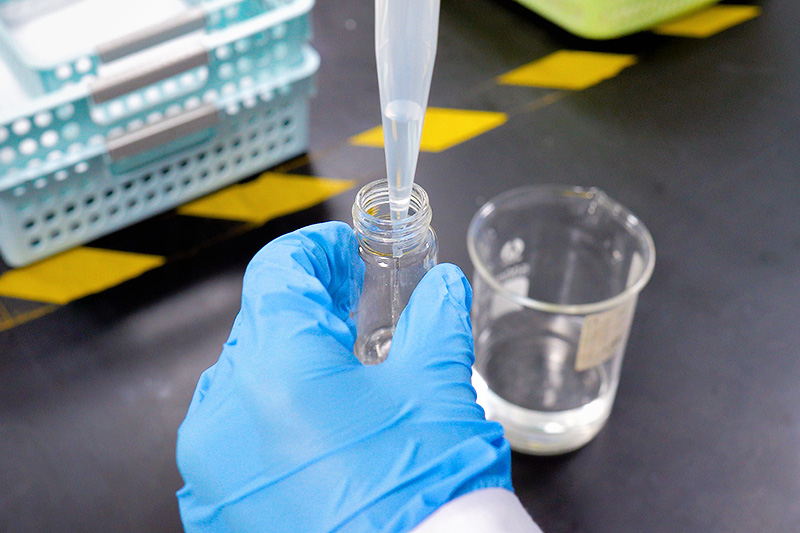
Composition analysis of metal materials
1. Inductively Coupled Plasma Atomic Emission Spectrometer (ICP-AES /ICP-OES)
Principle: The use of plasma excited light source (ICP) to vaporize the sample, dissociate or decompose into an atomic state, atoms can be further ionized into an ion state, atoms and ions in the light source excited light. The light emitted by the light source is decomposed into the spectrum arranged according to the wavelength by the spectroscopic system, and then the spectrum is detected by the photoelectric device. The sample is qualitatively analyzed according to the measured spectral wavelength and quantitatively analyzed according to the emitted light intensity.
2. X-ray Fluorescence Spectrometer (XRF)
Principle: When the sample is irradiated with X-rays, the sample can be excited with various wavelengths of fluorescent X-rays, and the mixed X-rays need to be separated by wavelength (or energy), respectively measuring the X-ray intensity of different wavelengths (or energy) for qualitative and quantitative analysis.
3. Spectrophotometer
Principle: Spectrophotometer uses a light source that can produce multiple wavelengths, through a series of spectrophotometric devices, resulting in a specific wavelength light source, light through the test sample, part of the light is absorbed, calculate the absorption value of the sample, which is converted into the concentration of the sample, the absorption value is proportional to the concentration of the sample.
4. Chemical analysis:
The use of chemical reaction based analysis methods, called chemical analysis. Each substance has its own unique chemical properties, and we can use the chemical reaction between the substances and characterize it in an appropriate way to indicate the process of the reaction, so as to obtain the content of certain combination components in the material
Plastic composition analysis
Functional group analysis: FTIR
Melting point analysis: DSC, TMA, DMA
Glass transition temperature analysis: DSC, TMA, DMA
Thermal stability, thermal decomposition temperature: TGA
Analysis of fiber composition of textiles
1. Combustion method
Textile fibers are basically organic polymer, fiber chemical composition in addition to a few of the same, the vast majority of there are large differences, so the chemical reaction and combustion characteristics of the fiber burning are different, according to which the chemical composition of different fibers can be identified.
2. Microscopy
Because of the different types and varieties of fiber and the special treatment of fiber in the processing process, the longitudinal and cross section of fiber have their own characteristics, so it can be comprehensively identified according to the longitudinal and cross section morphological characteristics of the fiber.
3. Chemical dissolution method
The distance between molecular chains increases due to the attraction between solute and solvent molecules. Due to the different chemical composition and structure of the fiber, its solubility in organic and inorganic solvents is also different. Therefore, the types of fibers can be distinguished by the solubility of fibers in different chemical solvents.
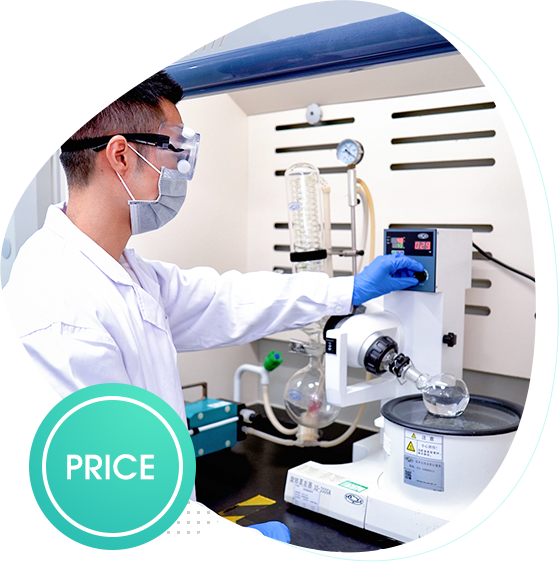
Volume discount available
For specific testing proposals to your products, please contact us via labtest@v-trust.com.
V-Trust, Your Reliable Testing Partner
- Professional technical support team
- Advanced testing equipment of famous brands
- Free testing consultancy
- On-site technical training services for suppliers
- Saving 20% in testing cost compared with other testing solution
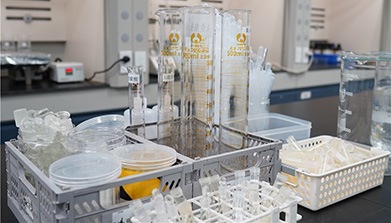
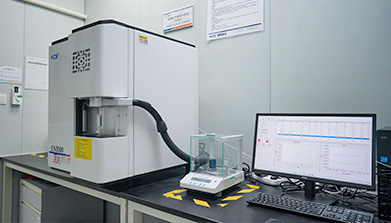
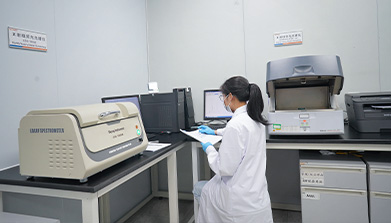
Get A Quote
GENERAL CONDITIONS OF SERVICES
-
General
- 1.1 Unless otherwise specifically and expressly agreed in writing by V-Trust Inspection Service Group (hereinafter called "V-Trust"), all services provided by V-Trust are governed by the following general conditions of service, which prevail any purchase terms and conditions.
- 1.2 Services carried out by V-Trust, on behalf of an entity or individual from whom the instructions to act have originated will be carried out by using techniques and processes that permit an independent, impartial and objective approach. The end result of the service will consist in a certificate or document (hereinafter called the "report") communicating the collection of information V-Trust has been requested to supply and will be delivered as a fax, a written document or an online report.
- 1.3 No other party than the client shall be entitled to give instructions to V-Trust, particularly on the scope of lab testing or delivery of report, unless so authorized by the client.
-
Provision of services
V-Trust's lab which is accredited by CNAS, CMA & CPSC. Where a Test report or Certificate is issued to the Client, V-Trust will provide the Services using reasonable care and skill and in accordance with the Codes of Practice or Regulations. A copy of such Codes of Practice, and any amendments to it as may be issued from time to time, will be supplied by V-Trust to the Client upon commencement of the Services. V-Trust's services (hereinafter called "services") consist of work performed, including but not limited to:
Food contact materials: LFGB, DGCCRF, EC1935/2004 (EU), FDA, etc.
Electronics & Electrical appliances: RoHS, LVD, EMC, FCC, RED, etc.
Infant & child products: EN71, ASTM F963, CPSIA, CPC, etc.
Harmful substances: REACH, POPs, California 65, etc.
-
V-Trust's obligations and undertakings
-
3.1 V-Trust expressly reserves the right to act at its own discretion in accepting or declining a request for service, and cannot be compelled to accept or be held liable for declining a request for services or for products:
- Falling out of its scope of activity or specialization.
- Presenting geographical accessibility problems, such as services to be rendered or products to be found in restricted or highly remote areas.
- Requiring V-Trust to obtain special permissions to operate such as governmental permissions.
-
3.2 V-Trust undertakes to supply the services it has accepted to carry out in a professional and timely manner, in accordance with proper professional practice and in compliance with:
- The client's special instructions when ordering the service and as confirmed by V-Trust – the terms of reference should be duly signed by the client and V-Trust, and in the absence of such instructions:
- Any relevant professional standard, trade custom, usage or practice.
- Such methods as V-Trust shall consider appropriate on technical, operational and/or financial grounds.
- 3.3 V-Trust shall exercise due care and skill in the selection and assignment of its personnel.
- 3.4 Information stated in Reports of Findings is derived from the results of testing procedures carried out in accordance with the instructions of Client, and/or our assessment of such results on the basis of any technical standards, trade custom or practice, or other circumstances which should in our professional opinion be taken into account.
- 3.5 Reports of Findings issued further to the testing of samples contain the Company’s opinion on those samples only and do not express any opinion upon the lot from which the samples were drawn.
- 3.6 All samples shall be retained for a maximum of 2 months or such other shorter time period as the nature of the sample permits and then returned to Client or otherwise disposed of at V-Trust’s discretion after which time V-Trust shall cease to have any responsibility for such samples. Storage of samples for more than 2 months shall incur a storage charge payable by Client. Client will be billed a handling and freight fee if samples are returned. Special disposal charges will be billed to Client if incurred.
-
3.1 V-Trust expressly reserves the right to act at its own discretion in accepting or declining a request for service, and cannot be compelled to accept or be held liable for declining a request for services or for products:
-
Client's obligations and undertakings
- The client agrees:
- 4.1 To take all reasonable steps to assure V-Trust has access to the materials on which service will be based.
- 4.2 To provide V-Trust with all information and samples, as well as the documents necessary to complete requested services, in a timely manner (and in any event not later than 48 hours prior to the desired intervention), except for generally available documents such as codes and standards, either directly or through suppliers or agents of the client.
- 4.3 To insure that adequate instructions and notice are given to V-Trust in due time to facilitate proper performance for the service requested.
- 4.4 Generally to render all reasonable assistance to V-Trust in providing necessary instructions, information, documents, safety and security information in connection with the working conditions, required equipment and access (as the case may be).
- 4.5 Documents reflecting engagements between the client and third parties or third parties' documents - if received by V-Trust - are considered to be for information only and do not extend or restrict the scope of the services or obligations accepted by V-Trust.
- 4.6 Client acknowledges that V-Trust, by providing the services, neither takes the place of Client or any third party, nor releases them from any of their obligations, nor otherwise assumes, abridges, abrogates or undertakes to discharge any duty of Client to any third party or that of any third party to Client.
-
Invoicing, fees and payment
- Please mark your T/T reference and write your V-Trust invoice No. in the subject of email. Normally clients need to pay the lab testing & certification fee before the test/certificate arrangement.
- 5.1 In the case where the client terminates an order for a V-Trust service within 24 hours of the scheduled date of service commencement will be charged at full price.
- 5.2 In the event that V-Trust is prevented for any reason beyond its control from performing or completing requested services, including cases of early termination of service for any reason not attributable to V-Trust, the client agrees to :5.2.1 Reimburse any expenditure, and out of pocket expenses made or incurred in relation to this service;5.2.2 Pay proportion of fees due for services actually rendered and to release V-Trust from all responsibility for partial or non-performance of the services.
- 5.3 In the event when the service must be cancelled on the intended service day, because of wrong information or samples given by client or factory, full service fee will be charged.
- 5.4 In the case where the client cancels a paid service that is already in progress (e.g. contacting the factory for sample delivery, reviewing the testing requirements), the client can either choose to keep the paid amount in his balance for further service, or to get a refund. 20% handling fee and related bank charges will be deducted if refund is chosen.
- 5.5 The lab testing fee is subject to the final samples to be tested, and if there is any difference from the testing proposal sent to clients before final sample arrival, V-Trust will update the final testing fee and seek client’s confirmation.
- 5.6 The minimum charge for any Lab Test order is US$100.
-
Liability and indemnification
-
6.1 Limitation of liability
- 6.1.1 V-Trust is neither an insurer nor a guarantor and disclaims such capacity. Clients seeking a guarantee against loss or damage should obtain appropriate insurance.
- 6.1.2 Subject to the client's instructions as accepted by V-Trust (as specified in the terms of reference), V-Trust will issue the report relating to the facts as recorded by it within the limits of the instructions received and on the basis of the documents and information provided by the client (refer to § 4 above), but V-Trust is under no obligation to report upon any facts or circumstances which are outside the specific scope of its assignment.
- 6.1.3 V-Trust advice is given only in relation to documents and information provided by the client, and V-Trust cannot be held liable if it has received incomplete or erroneous information.
- 6.1.4 In the event of false information or wrong testing samples being given to V-Trust by a third party, V-Trust accepts no liability.
- 6.1.5 V-Trust undertakes to use its best efforts and to exercise due care and skill in the performance of its services, and accepts liability only in case of negligence proven by the client.
-
6.2 Indemnification
- 6.2.1 In the event of V-Trust being held liable in respect of any claim for loss, damage or expense of whatever nature and however arising, its liability to the client shall in no circumstances exceed 10 times the amount of the fee paid in respect of the specific service which gives rise to such claim or US$20,000 (or its equivalent in local currency), whichever is the lesser
- 6.2.2 The client shall guarantee and indemnify V-Trust and its servants, agents or subcontractors against all claims made by third parties for loss, damage or expense of what nature arising, relating to the performance or non-performance of any service, to the extent that the total sum of such claims exceeds the limitation of liability mentioned in Article 6.2.1.
- 6.3 In the event of any claim, notice must be given to headquarters which is located at 10/F, Canton Fair Tower, 679 Fengpu Road, Pazhou, Guangzhou, China. Tel: +86-20-89089880, Fax: +86-20-89089925 within seven days following discovery of the facts, or three months from the completion of the V-Trust service.
-
6.1 Limitation of liability
-
Termination of services
- V-Trust shall be entitled to automatically either terminate and/or suspend provision of services in the event that:
- 7.1 The client commits any material breach of its obligations under these terms and conditions and/or the terms of reference and (if such breach shall be capable of remedy) fails to make good such breach within ten days of receipt of notice served by the non-defaulting party (V-Trust) requiring it so to do. Material breaches include but are not limited to willful and deliberate breaches by the client of its obligations mentioned herein.
- 7.2 The client is insolvent or unable to pay its debts, in suspension of payments, or convenes a meeting of or compounds with its creditors or has a receiving order made against it or (other than for the purposes of bona fide amalgamation or reconstruction) has an order made or a resolution passed for its winding up or for the appointment of an administrator to manage its affairs, business and property or has a receiver or administrative receiver appointed over any of its assets or undertaking or if V-Trust takes or suffers any similar or analogous action in consequence of debt.
-
Miscellaneous
- 8.1 V-Trust, and/or its subsidiaries and/or affiliates and the client undertake not to divulge to any third party confidential information obtained from the other party regarding the execution of V-Trust services.
- 8.2 The report will reflect findings of the service at the time and place of service. This report does not discharge sellers and/or suppliers from their legal and/or commercial obligations towards the client.
-
Applicable and Governing law, Jurisdiction and settlement of dispute
- 9.1 Unless otherwise provided, these terms and conditions shall be governed by and construed in accordance with Chinese Law.
- All disputes or differences of any kind whatsoever between the parties in connection with or arising out of the services shall be submitted to the non-exclusive jurisdiction of the courts of Guangzhou, China.

